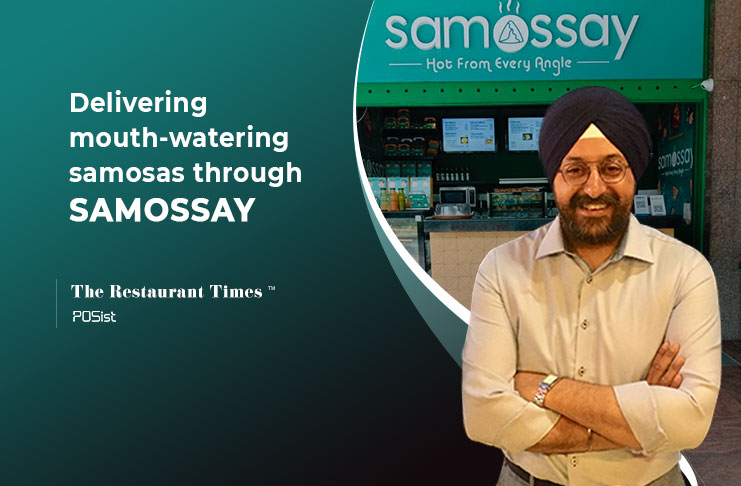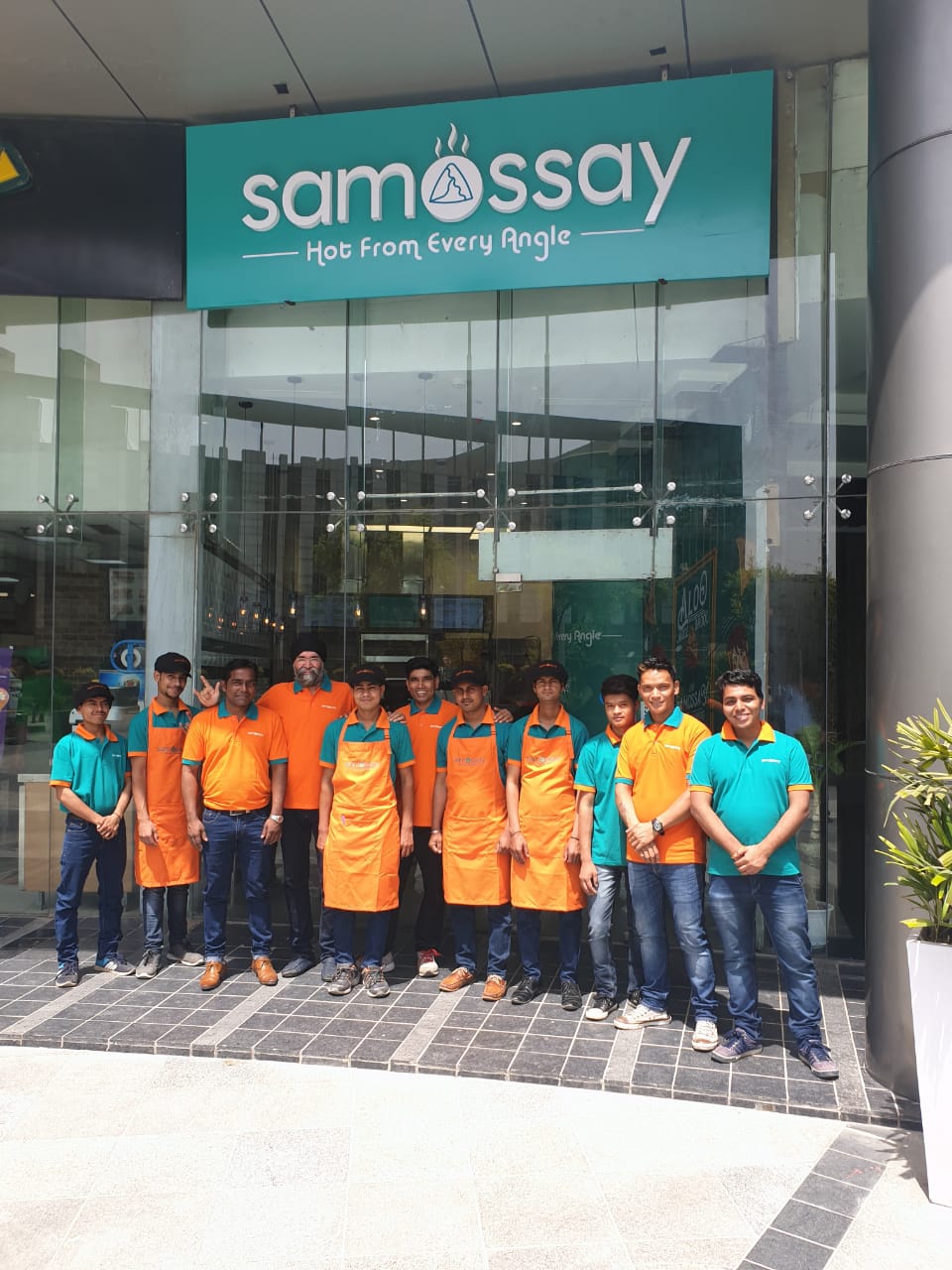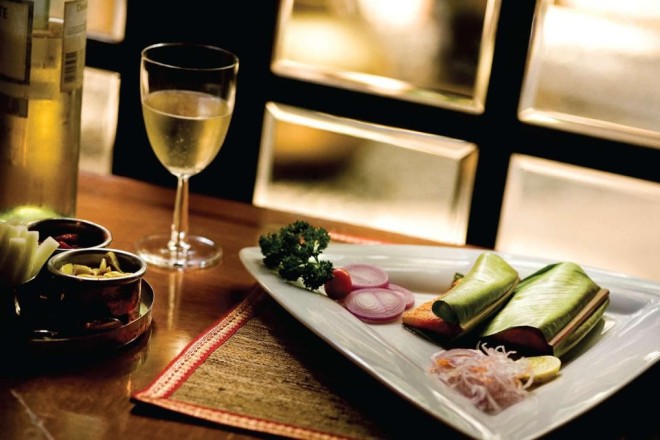Prabhjot Singh, an enthusiastic and passionate embracer of tastes and cultures around the world, is a foodie by passion. After globetrotting for a while, he decided to enter the restaurant industry.Prabhjot along with his co-founders decided on selling samosas, which are pretty much the national street food of India. Samosas being a popular savory snack across the country, Prabhjot and the team decided to play around this snack. That is how, they started Samossay, a specialty restaurant. At the moment, they have 10 varieties of veg samosas and 6 varieties of non-veg samosas. Apart from this, their menu extends to several variants such as chaats, bun samosa, kachori, gujiyas etc.
In Conversation With Prabhjot Singh of Samossay
In an exclusive conversation with The Restaurant Times, Prabhjot Singh talks of his journey in the industry, the story behind Samossay, offering a consistent experience to patrons, and a lot more!
Offering a Consistent Experience To Patrons
Samossay strives to deliver excellent quality samosas to its patrons. They have been constantly innovating and experimenting with new flavors. Prabhjot says they plan to come up with ‘gluten-free’ samosas for the health freaks. He regards food quality as a fundamental component to satisfy restaurant customers. At Samossay, there are quality controllers at every level to check the quality of the food items. They also have random in-house checks to ensure high-quality ingredients.
Setting high standards when it comes to food quality is indispensable and it is essential to assure that consumers get the same quality every time. By applying consistency to the experience that you deliver to customers, you can drive customer lifetime value and grow your bottom line.
Also, at Samossay they pay immense attention to customer feedback. Regular feedback is collected from the customers. According to Prabhjot, customer feedback is critical for future product development, improving the customer experience and overall customer satisfaction levels. The proper analysis of customer feedback provides any restaurant with a better view of what it has to change and improve. It also helps increase customer loyalty and reduce customer support cases.
To-Dos While Opening a QSR
Opening a successful QSR is not an easy job. Here are some aspects to be considered while opening a QSR:
- Right Location: The location should be a key factor for opening a QSR. Before finalizing a particular location, it is important to analyze the target market. Analyzing the preferences of the customers in that area is critical to understanding the consumer demand in that area. Prabhjot says where your restaurant is located can be just as important to your success as your menu, marketing, or customer reviews.
- The Price Factor: The price is an important consideration when people are dining out and it takes into account different components of the QSR. According to Prabhjot, restaurant customers expect the prices to reflect the type of food, level of service and the overall atmosphere of the QSR. Prices that seem extravagant will upset customers, discouraging repeat business while unreasonably low prices tend to raise mistrust about the food and service quality.
- Branding It Right: Restaurant branding matters. Everything communicates, whether by design or default. Restaurant brands have a definite mission, purpose, and reason for existing. Prabhjot says the brand experience has to last in order to generate brand loyalty. A quality brand gives people something to believe in, something to stand behind!
What Not To Do while opening a QSR
- Spending Too Much On Infrastructure: According to Prabhjot, it is essential to have a solid business plan and an accurate budget while launching a QSR. Devoting lots of money on the infrastructure of the QSR should be avoided. To reach break-even and make profits, growing your revenue is one way, the other is limiting your expenses.
- Pricing According To The Product: Prabhjot says that restaurateurs must keep in mind that customers pay according to the worth of the product offered. He gives an example by saying, customers would never pay more than INR 100 for a samosa, which is the maximum limit. Restaurateurs must keep this in mind while pricing their food items.
Checklist For Restaurant Expansion
Restaurant expansion shouldn’t be a haphazard, rushed decision. That’ll lead to failure. Take the time to analyze it through and do it accurately. Here are some key areas to be kept in mind:
- Targeting Densely Populated Areas: Prabhjot says that it is important to target thickly populated areas, the idea is to increase the consumer pool. After choosing such a location, garner an understanding of the area’s flow and activity so you can make an informed decision. It will help one to understand the preferred palate of that particular area, spending capacity, etc.
- Financials: Organizing your finances is a key step—it will help you execute seamlessly, says Prabhjot. While expanding, it should be kept in mind that the first model needs to be successful enough to be replicated, and therefore, the first three or four restaurant outlets need to be objectively assessed before expanding.
- Offering Something Unique: A great restaurant will have one or various unique features that will stand out in the customer’s mind and this produces a competitive advantage. If providing excellent food and service is all that a restaurant can offer, that is nothing distinct. If customers can get the equivalent experience from dozens of other restaurants, they are compelled to disregard your restaurant.
Role Of a POS At Samossay
Contemporary restaurant POS systems provide a platform that sits at the center of any food and beverage operation, standalone or enterprise, helping to intensify the customer experience and streamline business operations. Samossay has been using Posist at their outlet.
“Posist helps us to generate a huge amount of insightful data which tells us about our % of gross sales, sales per item, the price points. We are also able to view the statistics regarding the delivery vs walk-in at our outlets, which helps us to analyze a lot about the kind of sales at our outlet. The financial statements which are an important part of the business, help us in determining the health of our outlets,” says Prabhjot.
Thanks to innovative restaurant technology, dining is getting smarter and quicker. In conclusion, the perks of a POS system are enhanced productivity, more powerful tracking, more competent management, and happier customers. While the setup cost and operating philosophy may seem unsettling at first, it is worth it for the powerful results and rewards your business will receive. With a POS system, you can concentrate on what matters most; the quality of your food and service and ultimately your consumers!




















Wow!